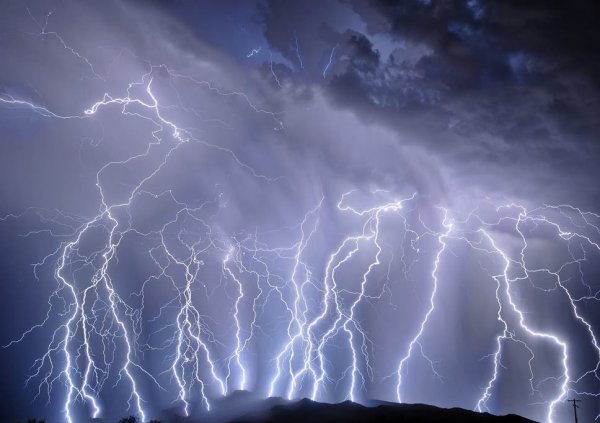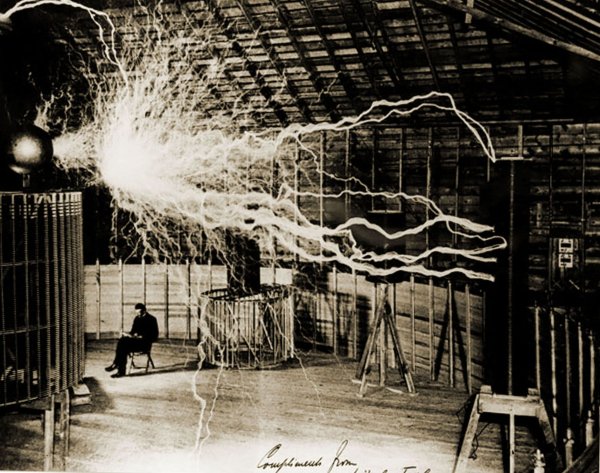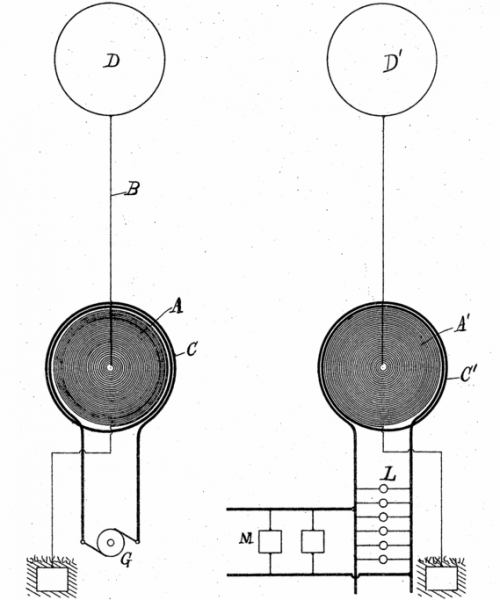Nikola Tesla's World Wireless System
In June 1899, a scientist of Serbian origin, Nikola Tesla, begins experimental work in his laboratory in Colorado Springs (USA). Tesla's goal at the time was a practical study of the possibility of transmitting electrical energy through the natural environment.
Tesla's laboratory is erected on a huge plateau, which is at an altitude of two thousand meters above sea level, and the area for hundreds of kilometers around is known for quite frequent thunderstorms with very bright lightning.
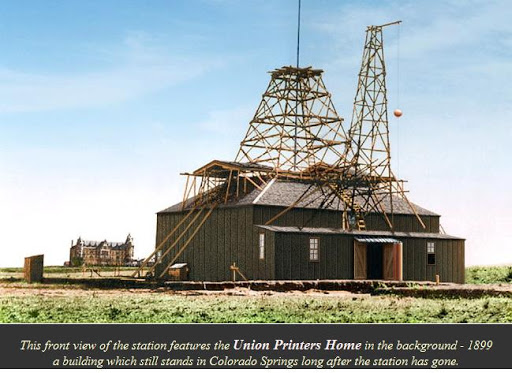
Tesla said that with the help of a finely tuned device he was able to detect lightning strikes occurring at a distance of seven or eight hundred kilometers from his laboratory. Sometimes he would wait almost an hour for the sound of thunder from the next lightning discharge, while his device accurately determined the distance to where the discharge had occurred, as well as the time after which the sound would reach his laboratory.
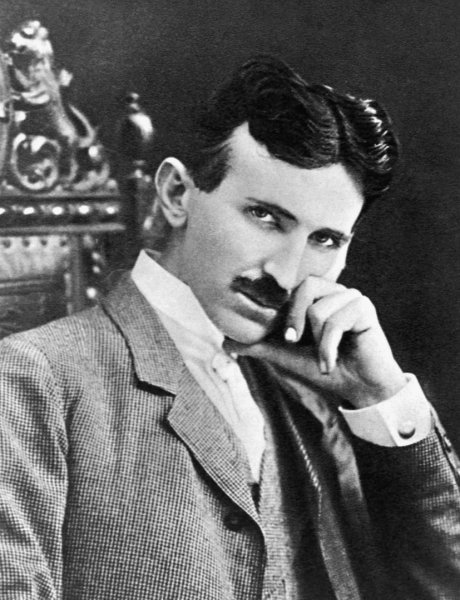
Wanting to study electrical vibrations in the globe, the scientist installed the receiving transformer so that its primary winding was grounded with one of its terminals, while its second terminal was connected to a conductive air terminal, the height of which could be adjusted.
The secondary winding of the transformer is connected to a sensitive self-regulating device. Oscillations in the primary winding caused current pulses to appear in the secondary winding, which in turn operated the recorder.
One day, Tesla observed lightning strikes from a thunderstorm raging within a radius of less than 50 kilometers from his laboratory, and then with the help of his device he managed to record about 12,000 lightning discharges in just two hours!
During the observations, the scientist was initially surprised that lightning strikes further away from his laboratory often had a stronger impact on his recording device than those that struck closer. Tesla unequivocally established that the difference in the strength of the discharges was not the cause of the differences. But what then?
On the third of July, Tesla made his discovery. Observing a thunderstorm that day, the scientist noted that the storm clouds rushing at high speed from his laboratory generated almost regular (recurring at almost regular intervals) lightning strikes. He started watching his tape recorder.
As the thunderstorm moved away from the laboratory, the current pulses in the receiving transformer initially weakened, but then increased again, a peak came, then passed and was replaced by a decrease in intensity, but then a peak came again, then a decrease again .
He observed this distinct pattern even when the thunderstorm had already moved about 300 kilometers from his laboratory, the intensity of the resulting disturbances remained quite significant.
The scientist had no doubt that these were waves spreading from the places where the lightning struck to the ground, as if along an ordinary wire, and he observed their crests and troughs at the very moments when the place of the receiving coil struck them.
Tesla then set out to build a device that would generate similar waves. It had to be a circuit with very high inductance and as little resistance as possible.
A transmitter of this kind can transmit energy (and information), but essentially not in the same way as implemented in Hertz devices, that is, not through electromagnetic radiation… These are supposed to be standing waves propagating along the earth as a conductor and through an electrically conductive atmosphere.
As conceived by the scientist, the frequency in his energy transfer system must be reduced to such an extent as to minimize the emission (!) of energy in the form electromagnetic waves.
Then, if the conditions for resonance are met, the circuit will be able to accumulate the electrical energy of many primary pulses like a pendulum. And the effect on receiving stations tuned to resonance would be harmonic oscillations, the intensity of which could in principle exceed in magnitude the phenomena of natural electricity that Tesla observed during thunderstorms in Colorado.
With such a transmission, the scientist assumes that he will use the conduction properties of the natural medium, as opposed to Hertz's method with radiation, where a lot of energy is simply dissipated and only a very small fraction of the transmitted energy reaches the receiver.
If you synchronize Tesla's receiver with his transmitter, then energy can be obtained with an efficiency of up to 99.5% (Nikola Tesla, articles, p. 356), as if by transferring current through a wire of low resistance, although in practice the transfer power is obtained wirelessly. Earth acts as the only conductor in such a system. The technology, Tesla believes, makes it possible to build a worldwide system for wireless transmission of electrical energy.
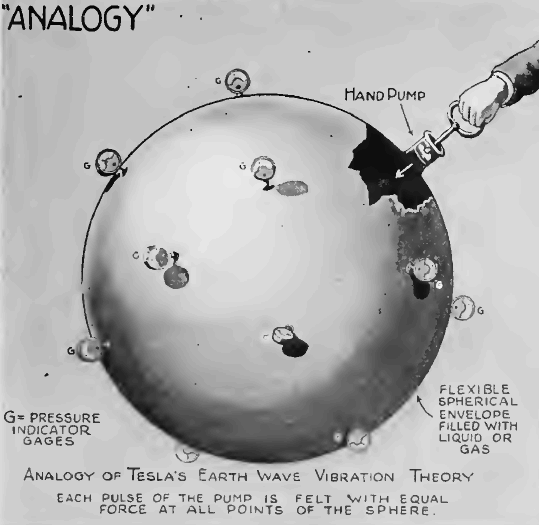
The analogy Tesla gave contrasting his system to the Hertzian system in terms of the efficiency of energy (or information) transmission is this.
Imagine that planet Earth is a rubber ball filled with water. The transmitter is a reciprocating pump operating at some point on the surface of the ball — water is drawn from the ball and returned to it at a certain frequency, but the period must be long enough for the ball as a whole to expand and contract at that frequency .
Then the pressure sensors on the surface of the ball (receivers) will be informed of movements, regardless of how far from the pump they are located, and with the same intensity.If the frequency is slightly higher, but not very high, then the oscillations will reflect from the opposite side of the ball and form nodes and antinodes, while if work is done in one of the receivers, then the energy will be consumed, but its transmission will prove to be very economical…
In the Hertzian system, if we continue the analogy, the pump rotates at an enormous frequency, and the opening through which the water is introduced and returned is very small. A colossal part of the energy is spent in the form of infrared heat waves, and a small part of the energy is transferred to the ball, so the receivers can do very little work.
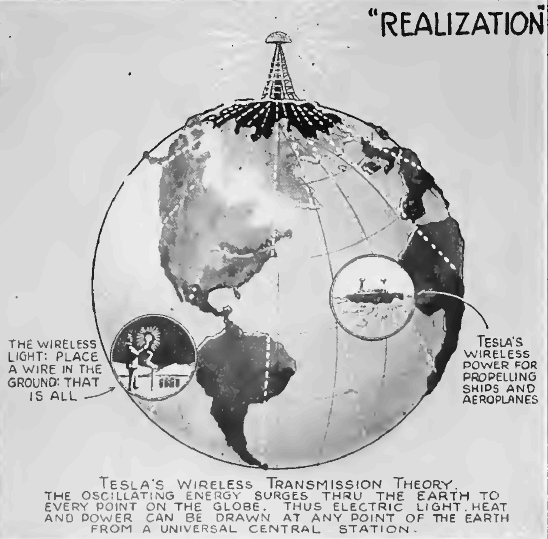
In practice, Tesla proposes to achieve resonant conditions in the world wireless system as follows. The transmitter and receiver are vertically grounded multi-turn coils with high surface conductivity at the terminals attached to their upper leads.
The transmitter is powered by a primary winding, which contains significantly fewer turns than the secondary, and is in strong inductive connection to the bottom of a grounded multi-turn secondary coil.
The alternating current in the primary winding is obtained with the help of a capacitor. The capacitor is charged by the source and discharged through the primary winding of the transmitter. The frequency of oscillation of the primary oscillating circuit thus formed is made equal to the frequency of free oscillations of the secondary circuit, and the length of the wire of the secondary winding from the ground to the terminal is made equal to one-fourth of the wavelength of the oscillations propagated along it.
Provided that almost all of the self-electrical capacity of the secondary circuit falls on the terminal, then it is at the terminal that the antinode (always the maximum swing) of the voltage and the node (always zero) of the current are obtained, and at the grounding point - the antinode of the current and the node of the voltage. The receiver has a similar design to the transmitter, with the only difference that its main coil is multi-turn, and the short one at the bottom is a secondary.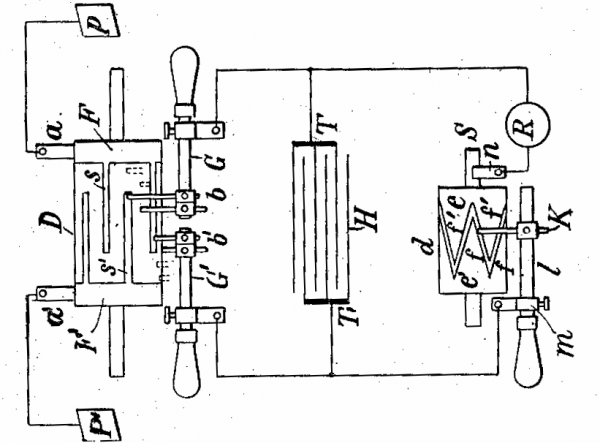
Optimizing the receiver circuit, Tesla came to the conclusion that for its most efficient operation the voltage from the secondary winding must be corrected. For this, the scientist developed a mechanical rectifier, which allows not only to correct the voltage, but also to transfer energy to the load only at those moments when the voltage of the secondary winding of the receiving circuit is close to the amplitude value.

